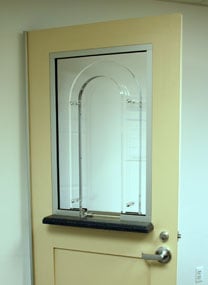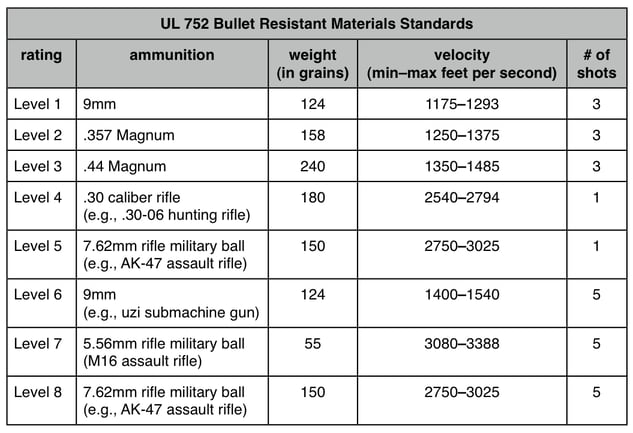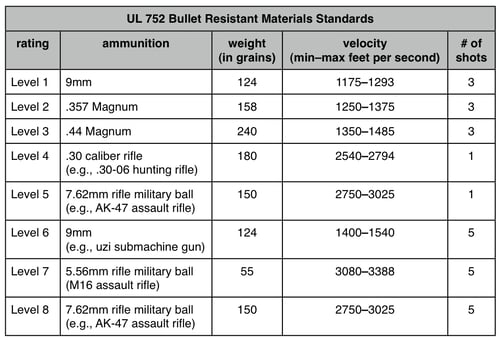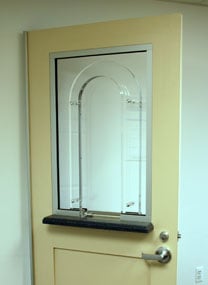There are five components to any bullet-resistant barrier system:
- Transparency (aka the “bulletproof glass”)
- Bullet resistant fiberglass panels
- Voice systems and passers
- Bullet resistant doors
- Ballistic framing
The transparency is the part you think of first, the so-called “bulletproof glass.” (FYI, this isn’t really glass. “Bulletproof glass” is actually one of several types of bullet-resistant thermoplastic, sometimes laminated in layers that include traditional tempered glass.) Hidden behind the drywall surrounding that window are layers of quarter-inch bullet-resistant fiberglass panels (You didn’t think sheetrock and studs were going to stop a .45 slug, did you?) If any sort of business is to occur, then workers and customers need to be able to talk and exchange papers. For that reason, most systems include integrated voice-transmission systems (which range from “talk-holes” backed with acrylic plates or steel grates to bullet-resistant intercom systems) and deal trays or even larger package passers. Since workers need to be able to enter and leave the secured area, most bullet-resistant barrier systems call for at least one ballistic door (check out the link and you’ll see that these can range from imposing steel slabs to wood-veneer doors that blend into any decor). Finally, those doors and windows need bullet-resistant framing to hold them in place.
Finished bullet-resistant barriers can be as complex as complete “systems” with dozens of fixed ballistic windows and window walls, a transaction window, a large passer, and several buzz-thru doors. Or the barrier can be as simple as a single transactional door (shown below), integrating the door, ballistic frame, transaction window, cash tray, counter, and a natural voice transmission system in a single unit that’s as easy to install as any solid-core door:

THREAT LEVELS EXPLAINED:
The most common standard for rating bullet-resistant barrier components is UL 752, which is Underwriters Laboratory’s “Standard of Safety for Bullet-Resisting Equipment”–summarized in this chart:


The most important columns are the first, second, and final. Reading off the top row, we see that a bullet resistant window rated “Level 1” will stop three shots from a 9mm pistol. At the other end of the spectrum, Level 8 bullet resistant barriers (the kind protecting exterior rooms of the White House) will stop a five-shot burst from an AK-47 assault rifle, similar bursts from an UZI or M16, a shot from a sniper rifle, blasts from a 12-gauge shotgun, and a whole lot of punishment from any pistol. For practical purposes, Level 4 through 8 windows are also very often rated against forced-entry and even extreme weather events. Here’s a brief overview on how “bullet proof” glass actually stops bullets.
PARTNERING WITH EXPERTS
By partnering with an established bullet proof company like Total Security Solutions you can offer top-notch bullet resistant barriers without having to separately deal with designers, suppliers, or shops that can precision cut hard sheets of acrylic and properly fabricate bullet resistant fiberglass paneling. Total Security Solutions provides both all-in-one drop-in units (like that transactional door) and complete pre-fabricated bullet proof systems, shipped ready to install without any additional modification. Their expert staff can guide you through the bidding, measurement, and installation process so that you can start getting in on bullet resistant barrier projects today. Contact Total Security Solutions to learn more.

